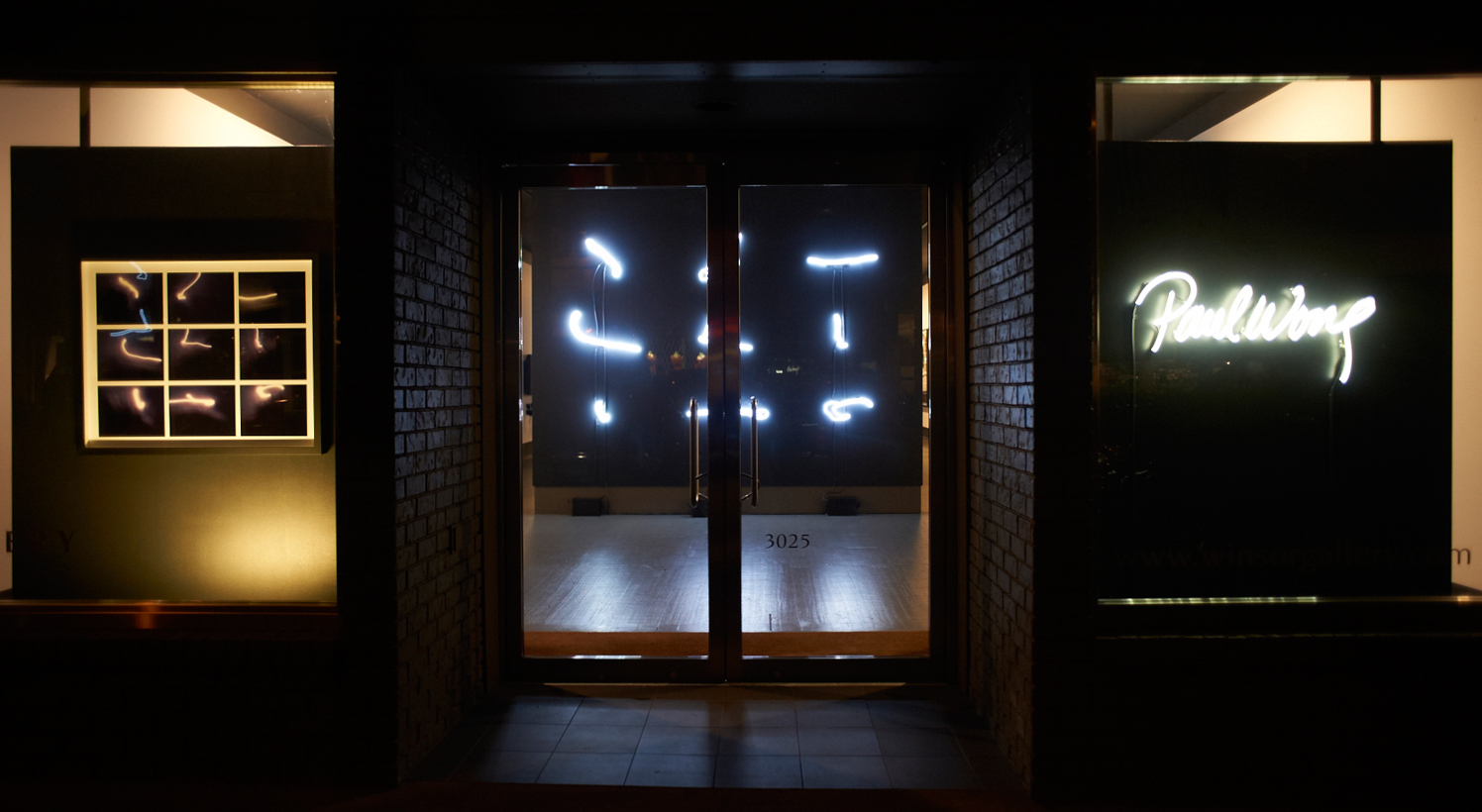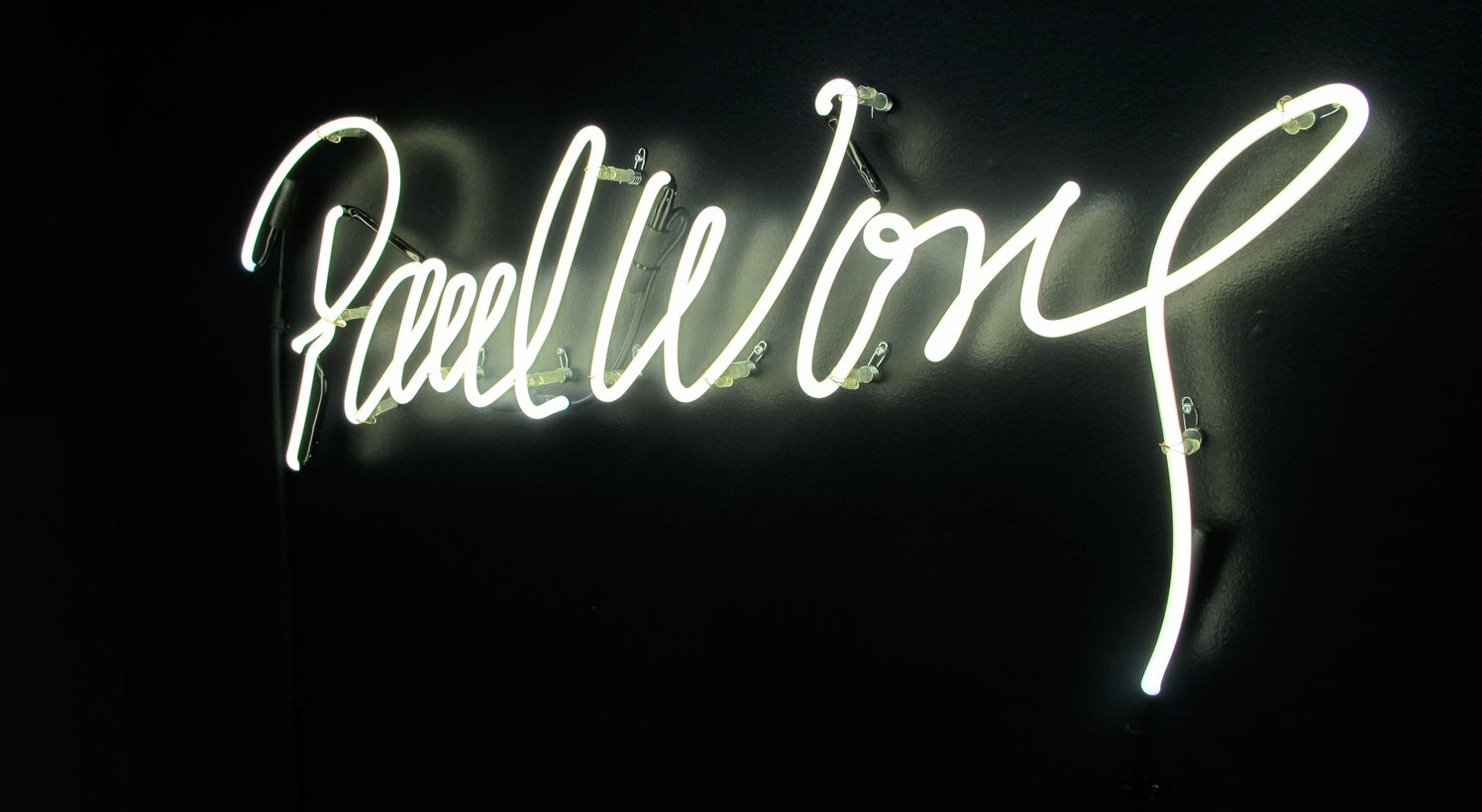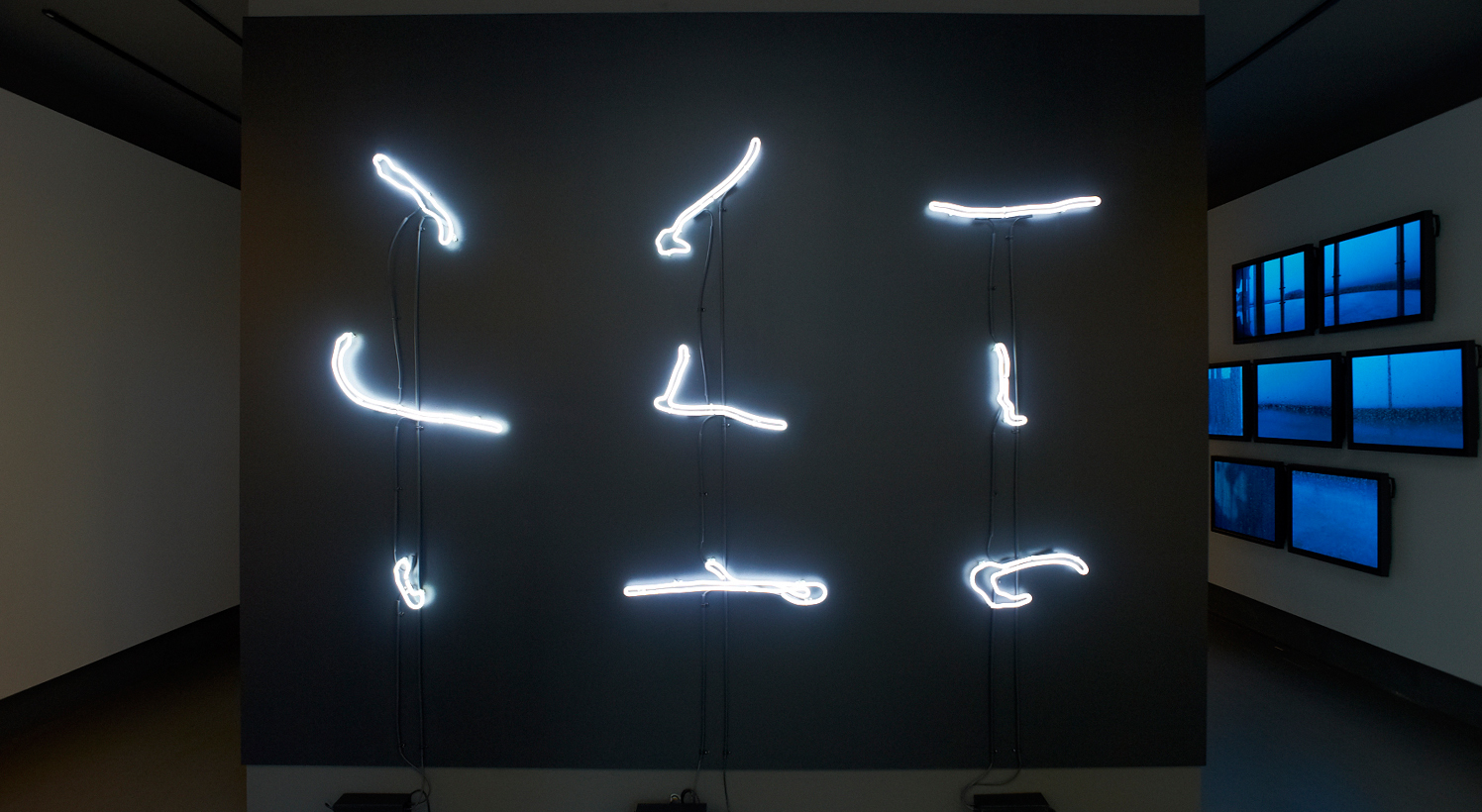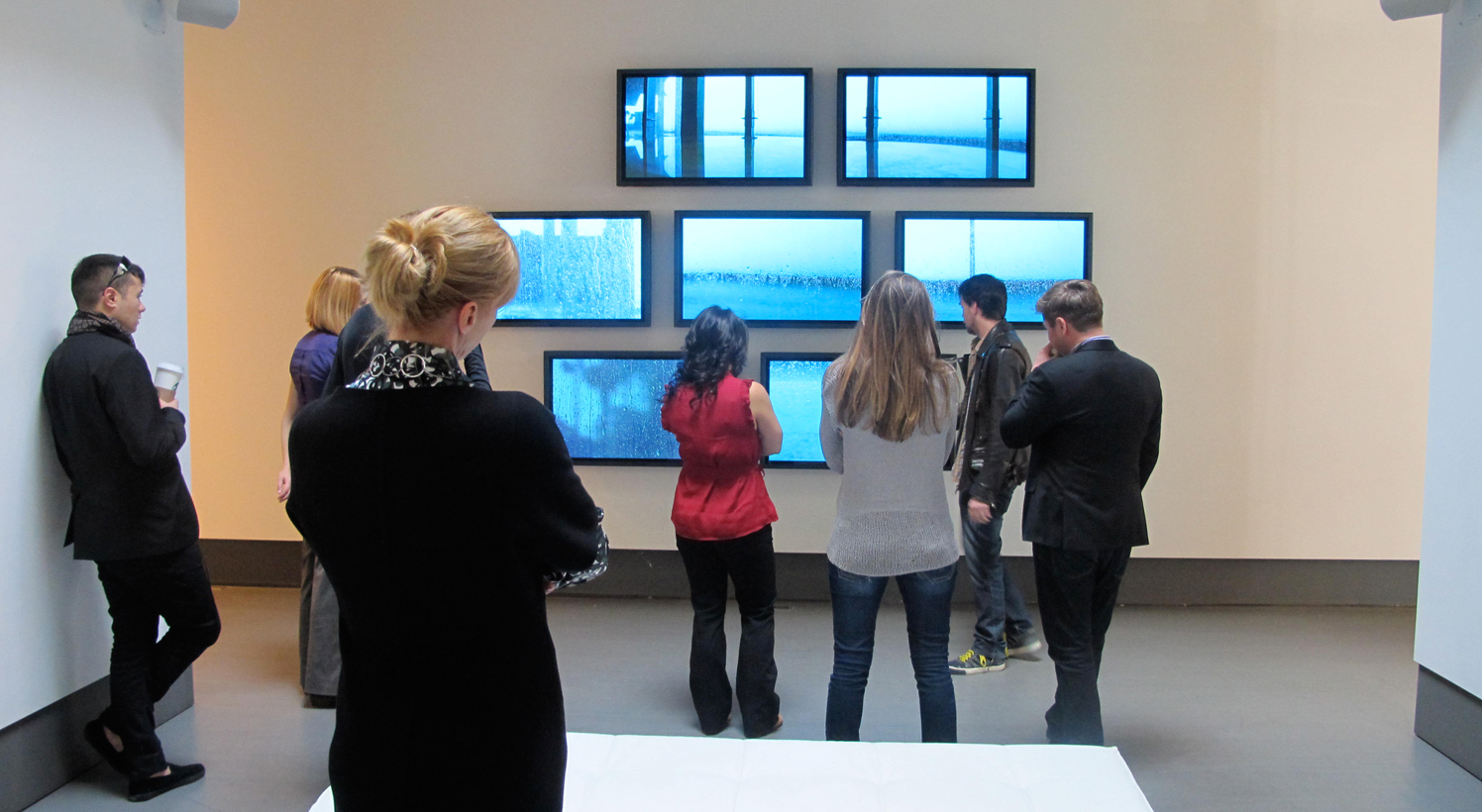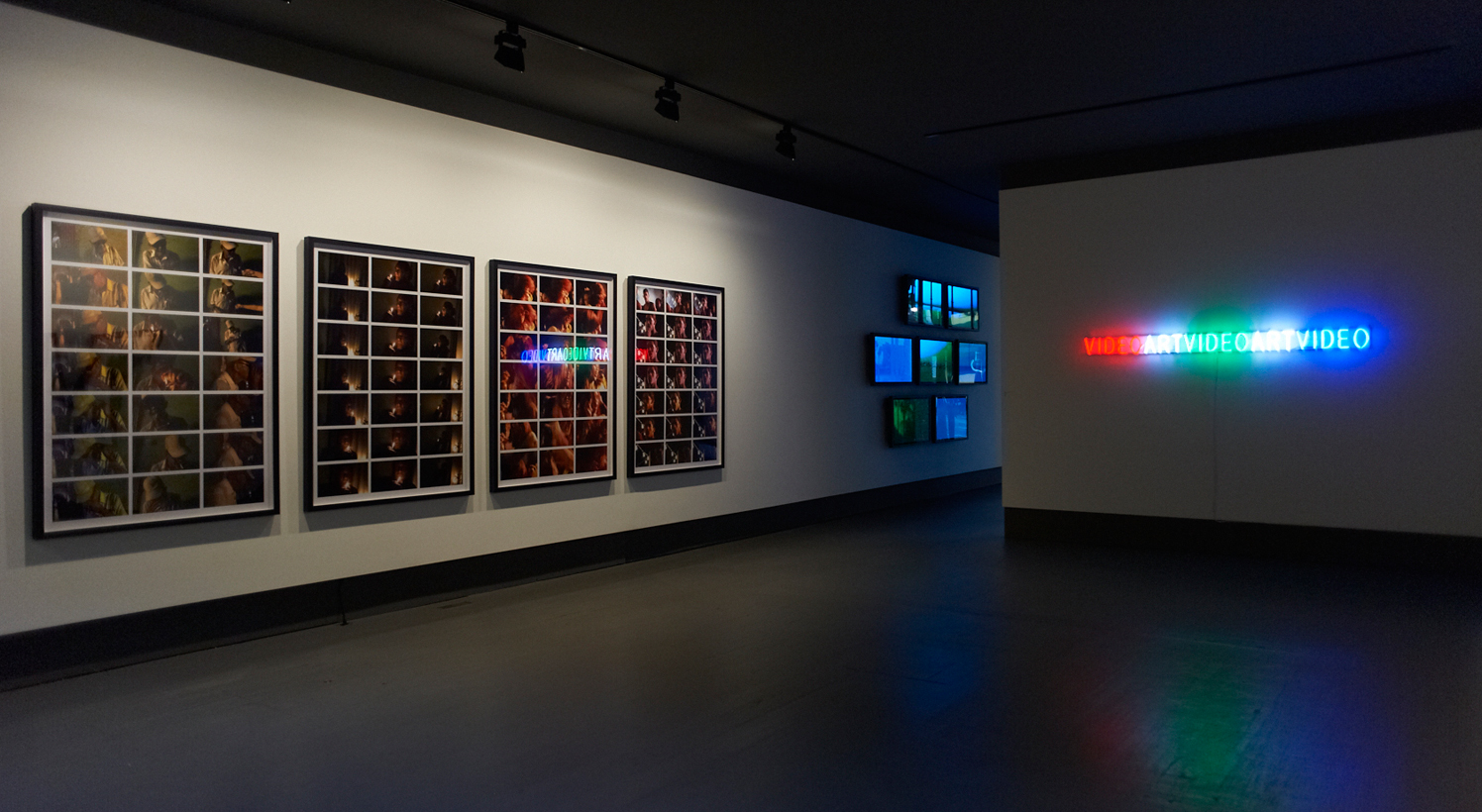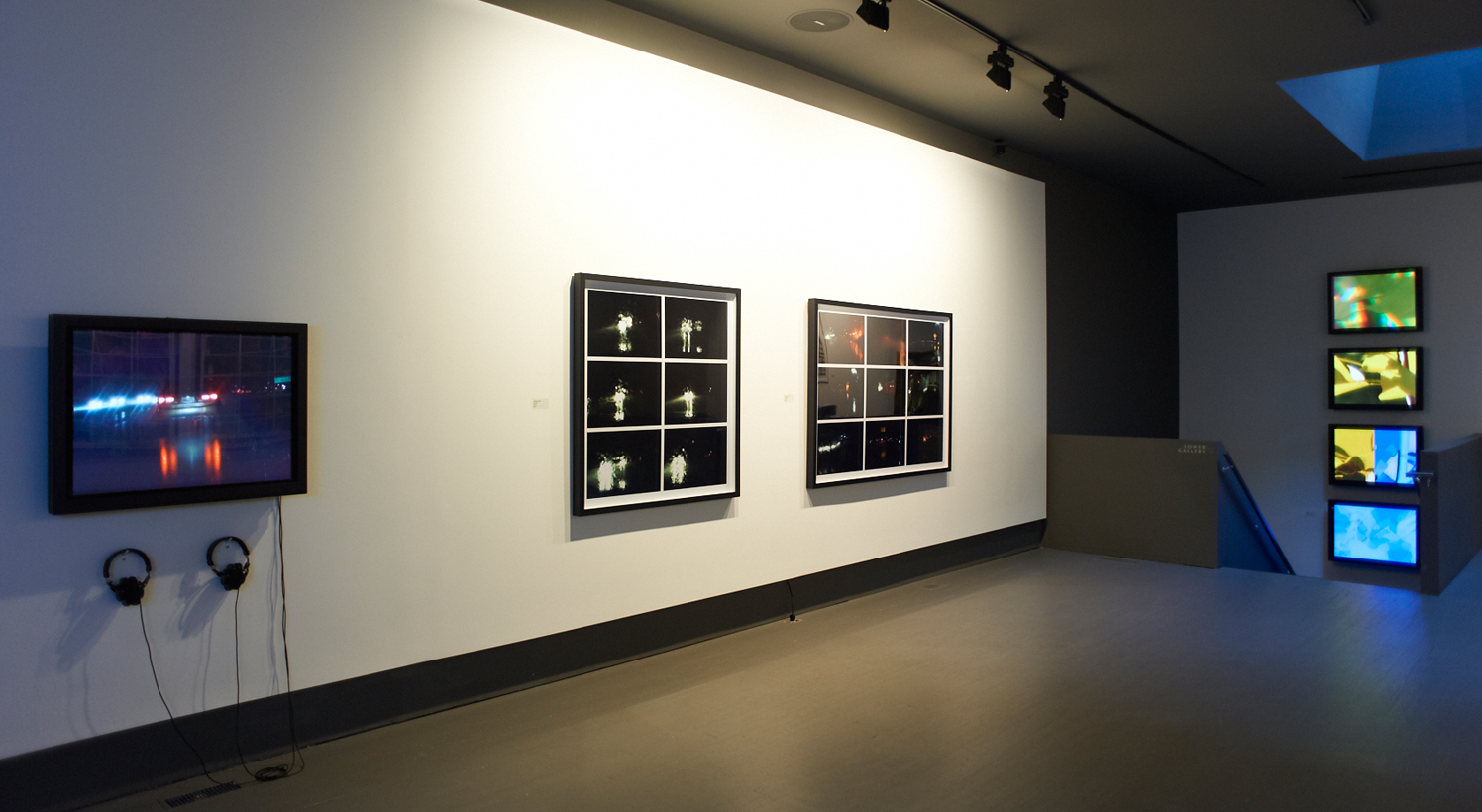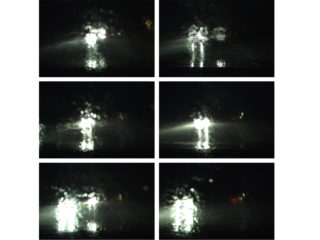IMMANENT
“Wong’s new videos, still photographs and neon, on view this past fall [2011] at Winsor Gallery in a highend retail district of Vancouver, are elegantly composed, unabashedly lovely, and wryly self-reflexive. Some of this work locates itself on the charged interface between nature, culture and representation, articulating the silvery beauty of a full moon against a velvety black sky, the sound and fury of a tropical storm in Havana or the colour and form of a ginkgo tree in a classical Chinese garden. Issues of race, sexuality and marginality appear to have been abandoned in favour of Wong’s “marked turn towards the aesthetic,” as Kathleen Ritter observes in her illuminating exhibition essay. However, she insists, Wong’s recent interest in charting light and movement is not about renouncing the political nature of his previous videos, performances, photographs and installations. “In fact,” Ritter remarks, “these works make the case that formal and conceptual concerns in art are intertwined in complex ways.” She then adds that Wong’s life is in itself political-as is “the very act of hitting the record button on a video camera.””
-Robin Laurence, Border Crossings, 2012
“Wong’s new videos, still photographs and neon, on view this past fall [2011] at Winsor Gallery in a highend retail district of Vancouver, are elegantly composed, unabashedly lovely, and wryly self-reflexive. Some of this work locates itself on the charged interface between nature, culture and representation, articulating the silvery beauty of a full moon against a velvety black sky, the sound and fury of a tropical storm in Havana or the colour and form of a ginkgo tree in a classical Chinese garden. Issues of race, sexuality and marginality appear to have been abandoned in favour of Wong’s “marked turn towards the aesthetic,” as Kathleen Ritter observes in her illuminating exhibition essay. However, she insists, Wong’s recent interest in charting light and movement is not about renouncing the political nature of his previous videos, performances, photographs and installations. “In fact,” Ritter remarks, “these works make the case that formal and conceptual concerns in art are intertwined in complex ways.” She then adds that Wong’s life is in itself political-as is “the very act of hitting the record button on a video camera.””
-Robin Laurence, Border Crossings, 2012
PAUL WONG: IMMANENT
by Kathleen Ritter
A life is everywhere, in all the moments that a given living subject goes through and that are measured by given lived objects: an immanent life carrying with it the events or singularities that are merely actualized in subjects and objects. This indefinite life does not itself have moments, close as they may be one to another, but only between-times, between moments; it doesn’t just come about or come after but offers the immensity of an empty time where one sees the event yet to come and already happened, in the absolute of an immediate consciousness.
— Gilles Deleuze, Immanence: A Life…
In his final essay written just prior to his death in 1995, Immanence: A Life…, Gilles Deleuze describes an immanent life as one that is singular, embodied, and in movement; a life lived intensively. Immanence is that which exists or operates within, and it is poised in relative opposition to transcendence, a divine or metaphysical beyond. An immanent life is always a particular one, evidenced by the use of the indefinite article to describe “a” life.
How fitting is it then that the title of Paul Wong’s new exhibition be called “Immanent”, since this body of new work stems from his experience and essentially from his life? An unintentional coincidence, the link between Deleuze’s last text and Wong’s recent art is felicitous.
Since Paul Wong picked up a video camera in the early 1970s, it seems that it has never left his hand. His work attests to a life in which the camera is always at the ready. Wong’s work reveals an intimate and complex relationship with the camera, one he has developed in over thirty years of his practice. His use of the camera is distinctive: it is immediate and unscripted, close-up and rarely still. The technique has a way of making viewers feel immediately present in the construction of the image—a companion and a witness to the world that Wong finds through his lens.
Wong’s recent work represents a marked turn towards the aesthetic—interesting for an artist known for his unapologetic, stark portrayal of issues of race and sexuality, life and death, in ways that are equally sharp, raw, funny, and poignant. While the works produced for this exhibition, which focus on light and movement, in no way deny the intensity and relevance of his more politicized videos. In fact these works make the case that formal and conceptual concerns in art are intertwined in complex ways, and that we are wrong to assume that the aesthetic regime is somehow removed from the social or the political. Wong’s life is political and, in his hands, the very act of hitting the record button on a video camera is a political act.
Take for example the video Storm (2009), a single-channel video recording of a car ride at night through the heaving rain. Shot from the passenger seat, Wong captures the lights of the cars in front coming in and out of focus on the rain-soaked windshield as the light multiplies over its surface in unexpected ways, mixed with the noise of the windshield wipers slapping and rain pounding on the car. Storm is part of a constellation of short videos produced that year where the line between the event and its representation, the everyday and the extraordinary, are completely (and in this case quite literally) blurred.
This impulse is manifest again in Habana Riviera (2011), a seven-channel video shot during a torrential downpour from the window of a hotel in Havana. Wong captures the storm from a number of vantages, with the focus moving gracefully between inside and outside the windowpane, lingering on its rain-speckled surfaces. The hues of the videos are shades of deep blue and the framing recalls the long lineage of art history (consider Vermeer or Magritte) that use the window as a metaphor for the act of picture-making. The soundtrack to this work amplifies the noise of the rain and distorts it to become richly immersive and almost cinematic. In videos such as Storm and Habana Riviera, where the artist picks up a camera to record a sudden event, invite us to consider those moments between watching and recording, between the event and its representation, and the conscious decision to hit record. This question seems more urgent than ever with the ubiquity of cameras and recording devices in the hands of many.
What is it about thunderstorms that fascinate us? It is an event when everyday patterns are interrupted, when we stop mid-course to take shelter from the rain, when life is suspended in moments of reflection and observation. These constitute those “in between moments”, as Deleuze describes, that Wong captures perfectly on camera.
A companion work to Habana Riviera is a series of images Wong made in Havana. Shot on video but rendered as a grid of twenty-one photographic stills, each of the four works are portraits of individuals linked by their minimal and dramatic sources of light illuminating the image. As portraits, the works suggest that a subject can only be caught in fleeting glances, and never in a single image. In particular, the sequence Hoops (Havana)(2011) shows a woman dancing, her hair tossed in different directions in each frame, selectively hiding and revealing her face as she moves to the music. While the images are still, we imagine frenetic movement between each of the frames, as if looking at the scene through a strobe light. These sequences underscore Wong’s interest in the aesthetics of light and movement, formal concepts fundamental to the medium of video.
Wong inserts himself into the exhibition explicitly through several other works: Signature (2011), the artist’s autograph rendered in bright neon; I Am Somebody (2011), a digital print with the title over an image of the artist; and Cover (2011), a series of 4 silkscreened prints on newsprint showing Wong’s face on the cover of the Georgia Straight, from an issue that featured him. These works serve to insert Wong’s identity into the space of the exhibition, reminding us that he is never far from his art.
An equally striking work, Full Moon Drawings (2011), is a series of 21 photographs shot with a still camera, which Wong describes as “drawings”. Taking the camera and moving it while shooting during a long exposure causes the light of the moon to streak across the surface of the film according to the path of the camera in Wong’s hands. On a formal level it is the very opposite of video, where movement is implied before the image is completely rendered, and the camera is the thing that moves rather than image itself. The image doesn’t have to move, because everything around it is already in motion; the movement of the earth around the sun, the moon around the earth, and finally, the artist’s hands on the camera. Wong demonstrates that photography can be a material and physical and expressive practice, rather than a strictly mechanical one.
For decades, Wong’s practice has run interference with the conceptual tradition for which Vancouver is known. His work speaks to a parallel history of art, one equally important, that privileges affect over reason, immediacy over distance, and solicits a visceral response rather than a strictly cerebral one. He consistently inserts himself into his work as a social and political subject, whether it be through the immediacy of these short videos that capture the “in between” moments in his everyday life, or literally by turning the camera on himself. In this way, Wong’s new work reminds us that the regimes of the aesthetic are never separate from other regimes, from the social, the political, or from life itself.
Complete works:
Signature (2011)
9 Full Moon Drawings (2011)
21 Full Moon Drawings (2011)
Habana Riviera (2011)
Ginko (2010)
Merging Storm (2011)
Imminent Storm (2011)
Storm (2009)
VIDEOARTVIDEOARTVIDEO (2011)
Blind Man (Havana) (2011)
Luis Alberto Gracia (Havana) (2011)
Hoops (Havana) (2011)
He (Havana) (2011)
Cover (2011)
I Am Somebody (2011)

